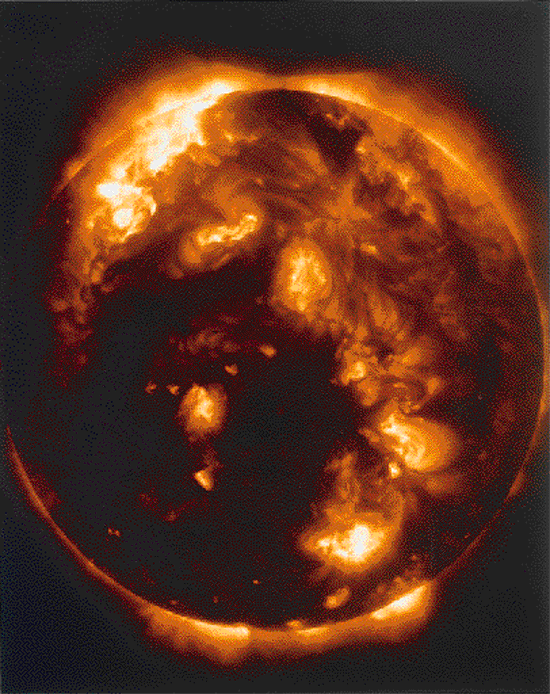

This spectacular image of the Sun was made by capturing X-rays emitted by our star's most active regions. It was taken by a camera on a rocket lofted shortly before the total solar eclipse of July 1991. (Note the shadow of the Moon approaching from the west, at top.) The brightest regions have temperatures of about 3 million kelvins.
Studying this chapter will enable you to:
Summarize the overall properties of the Sun.
Explain how energy travels from the solar core, through the interior, and out into space.
Name the Sun's outer layers and describe what those layers tell us about the Sun's surface composition and temperature.
Discuss the nature of the Sun's magnetic field and its relationship to the various types of solar activity.
Outline the process by which energy is produced in the Sun's interior.
Explain how observations of the Sun's core challenge our present understanding of solar physics.
Living in the solar system, we have the chance to study, at close range, perhaps the most common type of cosmic object—a star. Our Sun is a star, and a fairly average star at that, but with one unique feature: it is very close to us—some 300,000 times closer than our next nearest neighbor, Alpha Centauri. Whereas Alpha Centauri is 4.3 light years distant, the Sun is only 8 light minutes away from us. Consequently, astronomers know far more about the properties of the Sun than about any of the other distant points of light in the universe. A good fraction of all our astronomical knowledge is based on modern studies of the Sun. Just as we studied our parent planet, Earth, to set the stage for our exploration of the solar system, we now study our parent star, the Sun, as the next step in our exploration of the universe.